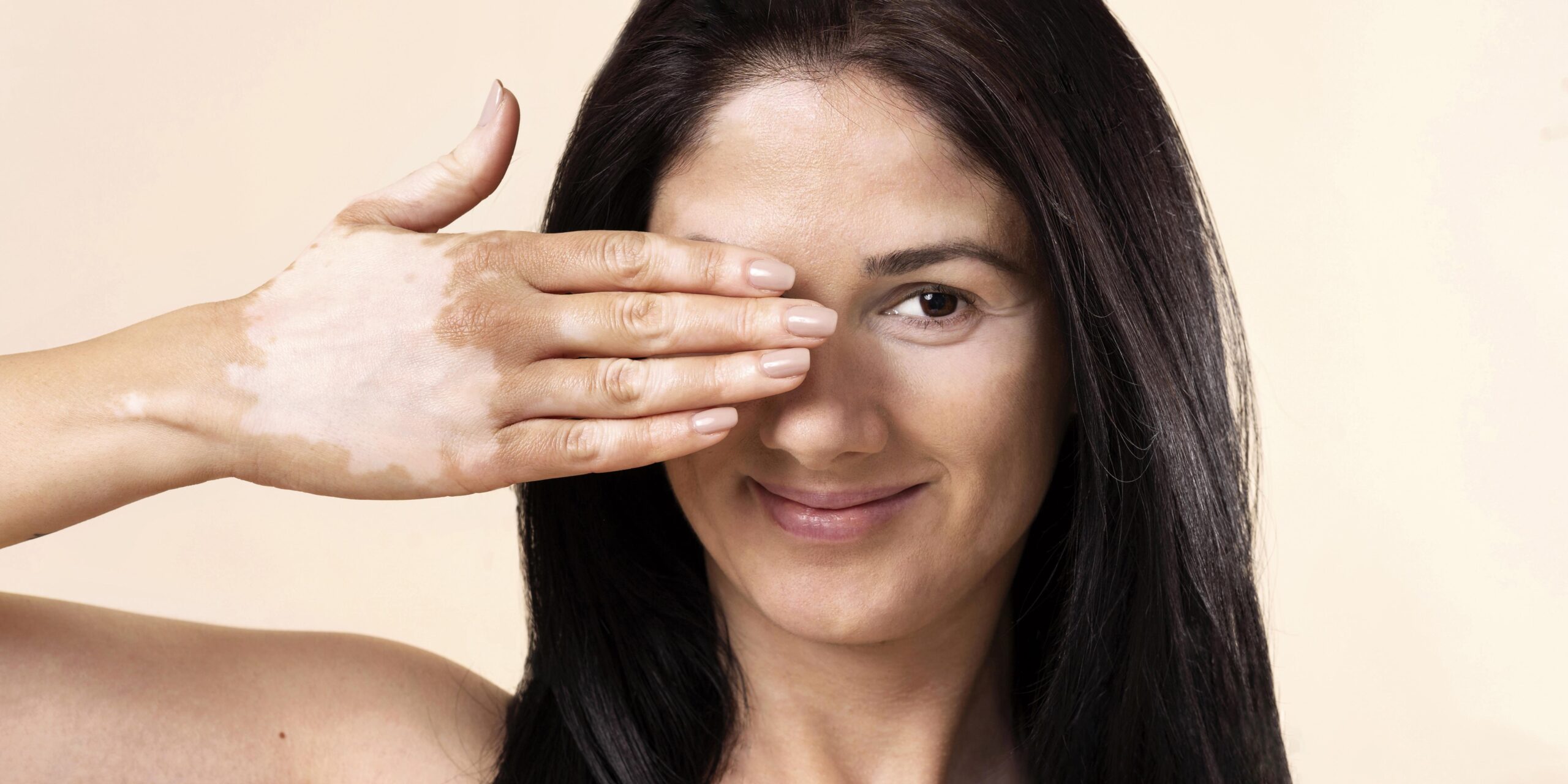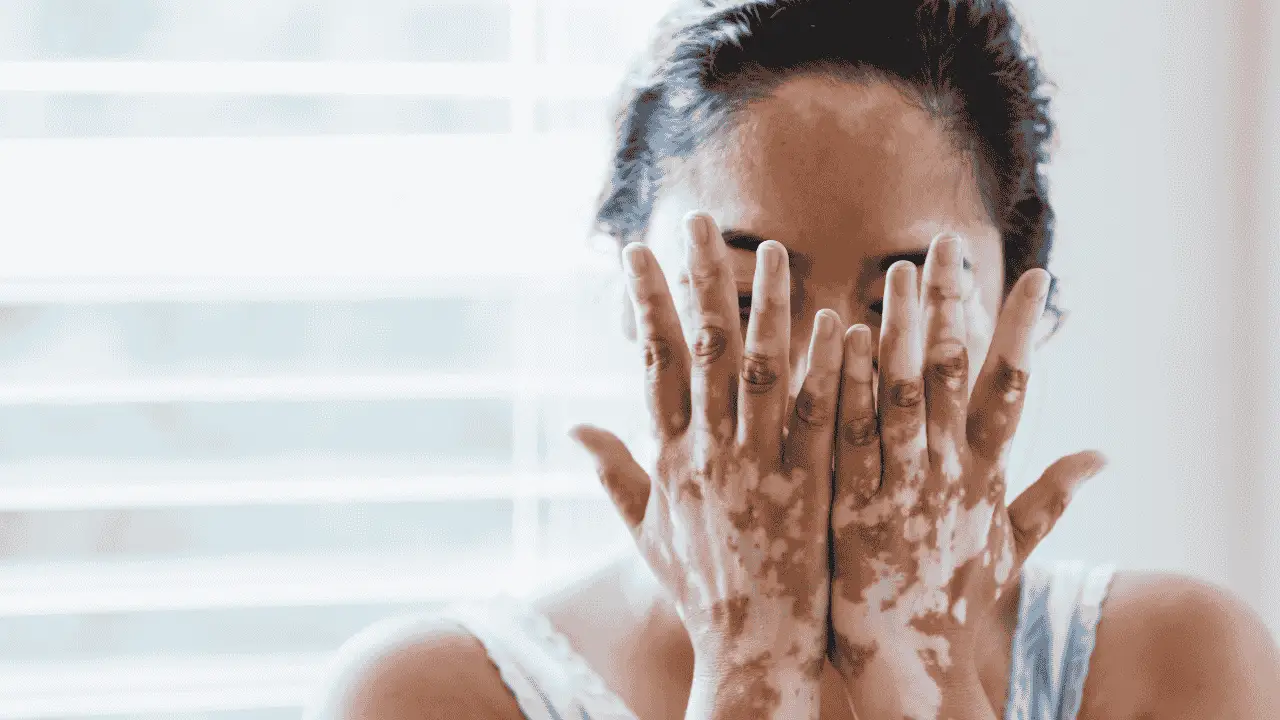

Vitiligo is a common skin disorder, a real burden of millions of individuals globally. Which causes white patches on the skin, caused by the loss of pigment. Not being contagious or physically painful on its own does not mean that fixes any social stigmas or fears. Is Vitiligo a Disability? Many individuals and their family members as well as employers often wonder whether or not vitiligo is a disability. This article takes an in-depth look at Is vitiligo a disability, its impact on psychological and social well-being, legal protection, as well as ways to live well with the disease.
Vitiligo is an autoimmune disorder characterized by the destruction of melanocytes, which are the skin’s pigment cells. This results in this skin condition characterized by white patches that develop anywhere on the body, including the face, hands, feet and mouth. Vitiligo can affect individuals of all ages, gender, and races, usually starting under the age of 20. The precise mechanism of vitiligo is not well known, although genetic, autoimmune, and environmental factors are considered to be implicated.
It has been estimated that the world wide prevalence of vitiligo is 0.5%‐2%. It is not restricted to any particular area of the country or ethnic group, and affects both children and adults. Children diagnosed with vitiligo at an early stage, and those receiving suitable treatments, can attain a remarkable improvement in their skin color and general health. Although it is not life-threatening, the appearance of vitiligo is often a serious psychological burden.
The definition of vitiligo as a disability is not consistent, whether medical, legal or social, influenced this way. Most countries don’t classify Vitiligo as an automatic disability. But if the condition has a persistent and significant effect on an individual’s ability to perform regular daily functions, it can be considered a disability under a number of statutes.
United States:
Vitiligo may be considered a disability under the Americans with Disabilities Act (ADA) if it “substantially limits one or more major life activities.” This can be either work, social and self-care based. A small percentage of affected military personnel and veterans are rated for vitiligo by the U.S. Department of Veterans Affairs (VA) 4 and the rating assigned (as high as 10%) reflects the area of skin affected and its visibility. The VA weighs only locations where clothing does not exceedingly cover, including the face, neck, arms and hands.
United Kingdom:
Under the Equality Act 2010, people with vitiligo are classed as disabled if it has a ‘substantial, long-term effect’ on their ability to carry out normal day-to-day activities. This would mean that the impact must be “expected to last at least one year and be more than minor or trivial.”
European Union:
Such safeguards are present across the EU in which employers have a duty to make reasonable adjustments for their employees who may have a disability; in this case vitiligo, if it has a substantial impact on their work and daily life.
Vitiligo is considered a disability only if it significantly hinders daily life or work activities. Key factors include:
Vitiligo can have profound effects on mental health and quality of life. The visible nature of the condition often leads to:
Many individuals with vitiligo describe the emotional toll of living with the condition:
“Having vitiligo can be very depressing. It has affected me a lot. Mostly when going out, people just look at you or don’t want any skin contact with you. It’s hard being in public.”
“I have to use lots of makeup on my face to go to work. I start at 11:30 am. I have to start getting ready two hours early just to do my makeup. I’m 49 years old. I never used makeup. Sometimes I feel OK. Other times I feel like I’m wearing a mask.”
There is currently no cure for vitiligo, but several treatment options can help manage the condition and improve quality of life:
Treatment decisions should consider the patient’s motivation, psychological impact, and clinical presentation. The risks and benefits of prolonged therapy must be carefully weighed.
A holistic approach to vitiligo management is essential. This includes:
Individuals with vitiligo are entitled to legal protections if the condition is classified as a disability. Employers are required to make reasonable adjustments, such as:
Supporting a person with vitiligo involves understanding, empathy, and advocacy:
Q: Is vitiligo a disability under the ADA?
A: Vitiligo can be considered a disability under the ADA if it substantially limits major life activities, such as working or socializing.
Q: What support is available for people with vitiligo at work?
A: Employers are required to make reasonable adjustments if vitiligo is classified as a disability. Support services and counseling can also help.
Q: How does vitiligo affect mental health?
A: Vitiligo can lead to anxiety, depression, and low self-esteem due to visible skin changes and social stigma.
Q: Can vitiligo be cured?
A: There is currently no cure for vitiligo, but treatments are available to manage symptoms and improve quality of life.
Q: How is vitiligo treated?
A: Treatment options include topical corticosteroids, phototherapy, surgical techniques, cosmetic camouflage, and depigmentation for extensive cases.
| Country/Region | Legal Status as Disability | Key Criteria |
|---|---|---|
| United States | Can be a disability (ADA) | Substantial limitation of major life activities |
| United Kingdom | Can be a disability (Equality Act 2010) | Major long-term effect on daily activities |
| European Union | Can be a disability (various acts) | Long-term, substantial impact |
Living with vitiligo can be challenging, but there are strategies to help manage the condition and maintain a good quality of life:
Progressive research and technology are changing the management of vitiligo. AI used to diagnose and predict outcome in persons with vitiligo Artificial intelligence (AI) applications have been developed to evaluate the severity of vitiligo and forecast treatment response. Integrated models of care There is an increased need for comprehensive care incorporating dermatologic, psychosocial, and social support, as it becomes the practice model to deliver holistic, patientcentered care.
Vitiligo is not automatically thought of as a disability, but it may be labeled as a disability if the effects are long term and have a significant impact on everyday life or work. In many countries, legal provisions have been made to counteract discrimination and to allow for reasonable adjustments. Vitiligo has a huge psycho-social impact and holistic care covering physical and emotional ailments is mandatory. People with vitiligo are capable of living life to the fullest with the proper support.
100% Original product that covered warranty by the vendor.
You have the right to return your orders within 15 days.
Your orders are shipped seamlessly between Canada & USA
Your payments are secure with our private security network.

We noticed you're visiting from Canada. We've updated our prices to Canadian dollar for your shopping convenience. Use United States (US) dollar instead. Dismiss
1 thought on “Is Vitiligo a Disability? A Guide to Social Perspectives”
“Thank you for shedding light on how vitiligo may qualify as a disability in certain legal contexts when it significantly impacts daily life and mental well-being. This helps broaden understanding and supports more empathetic legal and social perspectives.”